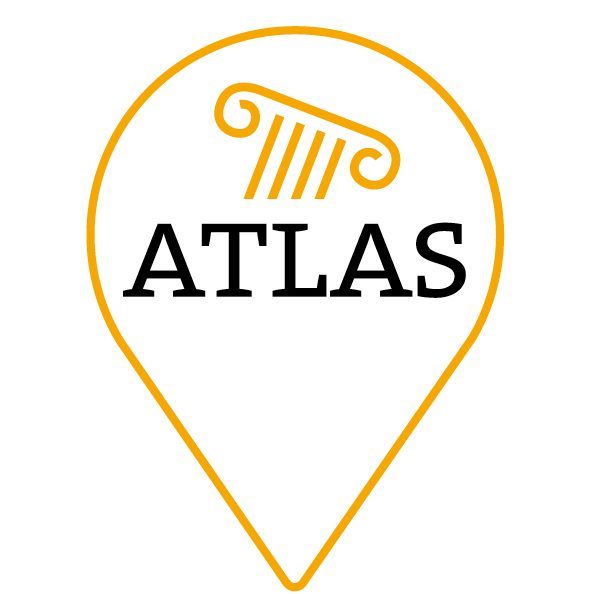The fourth and penultimate ATLAS meeting, Les Villes dans l’Antiquité Tardive au sud de la péninsule Ibérique et en Afrique du Nord: entre recherche et valorisation patrimoniale, took place in Tunisia under the organisation of the Institut National du Patrimoine, the Agence de Mise en Valeur du Patrimoine et de Promotion Culturelle, the Institut de Recherche sur le Maghreb Contemporain, the Casa de Velázquez, the Universität Hamburg and the UMR 7266 LIENSs (La Rochelle Université/CNRS) on May 2nd and 3rd. Some started their trips on International Labour Day with some concern, crossing their fingers that strikes would not impede travel. Fortunately, very few flights were cancelled, they were easily changed and all were in time for the first dinner in the Sidi Bou Said hotel. Nothing like meeting up with our colleagues on a terrace with a fantastic view of the city of Tunis!
Tuesday May 2nd: Conference at Institut Nationale du Patrimoine
After a good night’s rest and a coffee with breakfast it was time to head for the INP in the medina of Tunis. Fortuna was not with us, the busride started too late in the morning leading us to get stuck in the morning traffic of city centre Tunis. With an hour delay we started the colloquium, only to discover that the internet-connection was not stable enough in the sturdy building, the walls were simply too massive. Despite these minor setbacks we started our conference with the opening words by Youssef Lachkem (the interim general director of the INP) and Daouda Sow (AMVPPC’s interim general director). They were followed by brief introductory words from Laurent Brassous, Sabine Panzram and Moheddine Chaouali, who concluded the opening of the fourth ATLAS project colloquium.
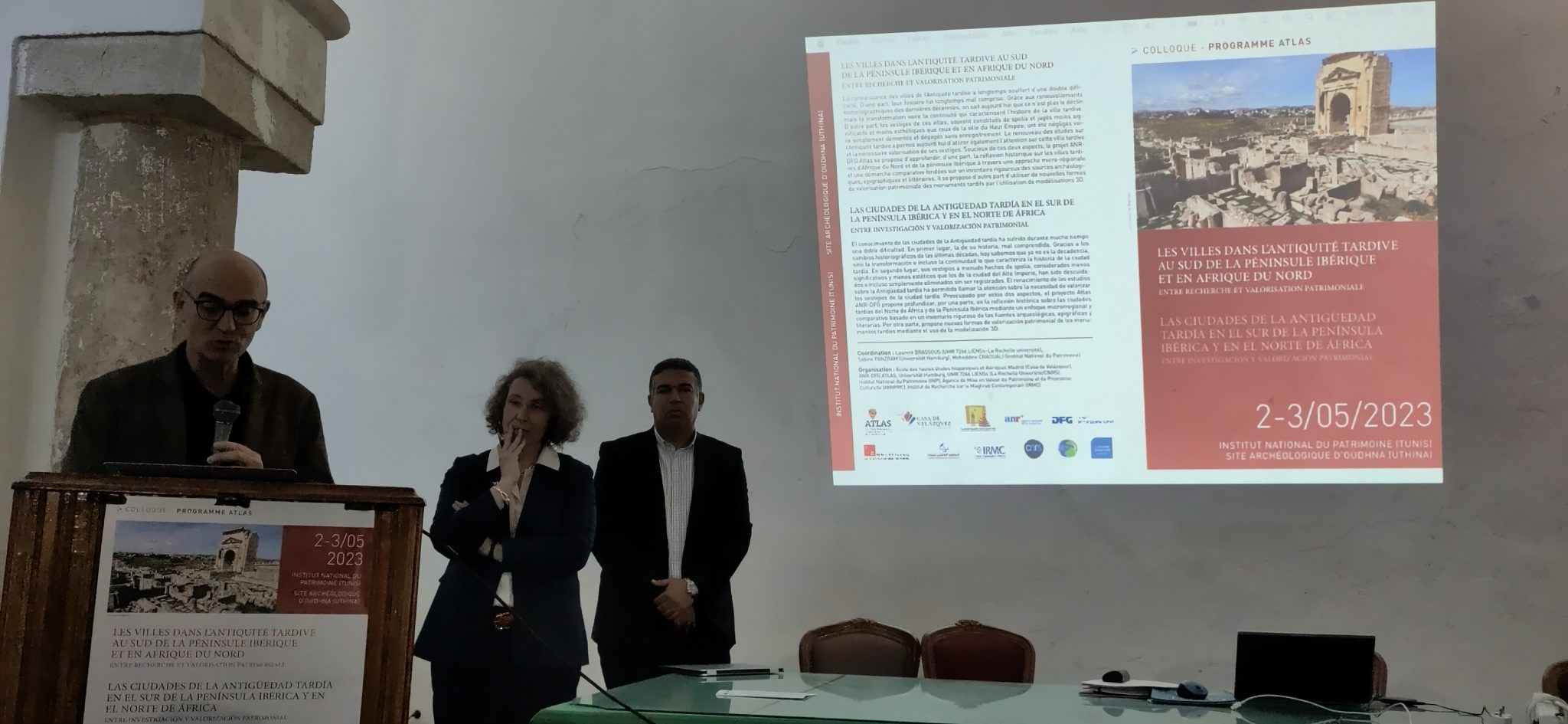
Sabine had the honour of opening the scientific part of the conference with her presentation for the Political Power work group. She presented the evidence of worldly and religious local government in late antiquity to observe how this slowly changed in our period of research. The Urban Spaces group was represented by Ada Lasheras and Stefan Ardeleanu, and their presentation focused on public and collective spaces in late antique cities. Far from more traditional perspectives, focusing mainly on the evolution of public monuments of the classical period (especially the fora), their communication drew attention to other spaces of collective and public use also present in these centuries.
The last presentation of the morning was for the epigraphy group. Pieter Houten presented their work on the funerary epigraphy only to descend into a discussion on dating. It appears that when scratching the surface of the epigraphic dating, the card house collapses rather quickly. How to solve the problems of correctly dating remains to be solved. With three presentations done it was already time for the final discussion of the morning. The responses from the public were positive, with some constructive observations and comments to take into account when we put all this work into writing. Whilst continuing the discussions we walked slowly into the medina to our lunch place.
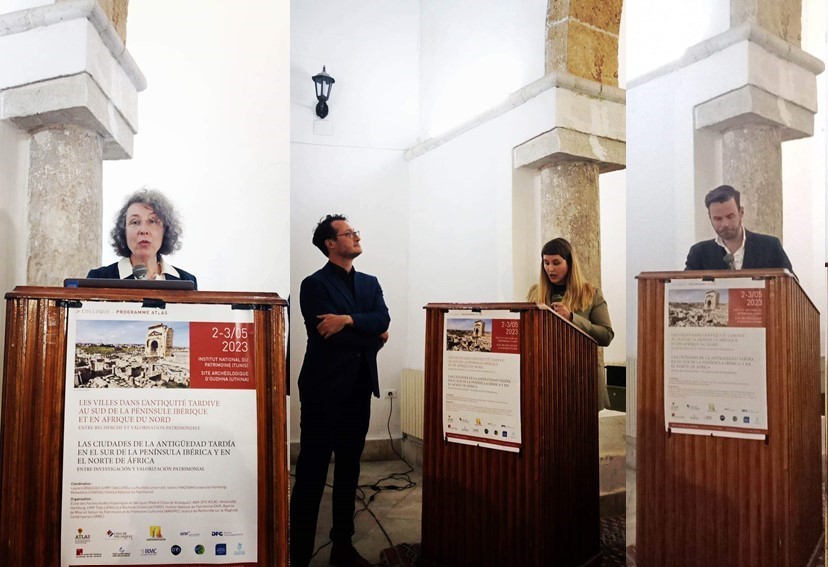
Refreshed from a great and copious lunch we returned to the INP only to discover that some sweets and coffee were presented there. Participants gathered around the table to savour Tunisian sweets, but it was time for the afternoon session to begin.
Jesús García and David Stone were given the challenge to engage the public so they wouldn’t give in to the after-dinner-dip. They presented, on behalf of the territory group, the issues and challenges of defining territory for our case study cities. The first issue is how to define a territory. The simple approach of assigning one by Thiessen polygons does not work when we add in the few pieces of evidence we have, they seldomly support this simple territorial division. Moreover, we need to consider the maritime territory of our coastal cities as well. But, in any case, their presentation showed that with a rough estimation of the territory we can start to analyse the settlement patterns and land-use. The presentation of the Economy group was given by Darío Bernal and David Stone, who pointed out the importance of analysing the economic aspects of the study cities to understand their historical development and link it to the evolving patterns of both regions and the western Mediterranean during Late Antiquity. Baelo Claudia and Leptiminus were specifically the examples chosen to show the possibilities offered by such economic studies, through the production of garum and the distribution of amphorae.
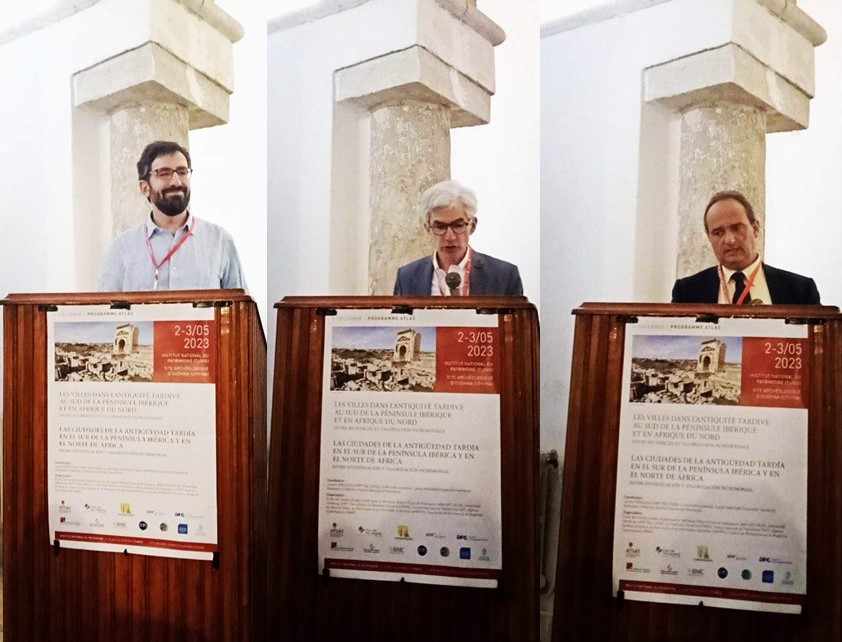
The group sessions were ended by the 8th century group. The official group presentation was presented by María Teresa Casal, who gave an overview of the materials, construction techniques and buildings that can be dated to the elusive 8th century. The quantitative and qualitative differences in the available data continue to be the greatest challenge they face, especially for making valid and useful comparisons. She also pointed out the need to widen the chronological range in order to really understand the processes of change that took place in this key period. This was followed by another paper dedicated to the issues of the 8th century, this time by Chokri Touihri, as other members were also invited to present their own work. His presentation focused specifically on Tunisian sites and the problems encountered in dating ceramic materials in this century, and even in the 9th century.
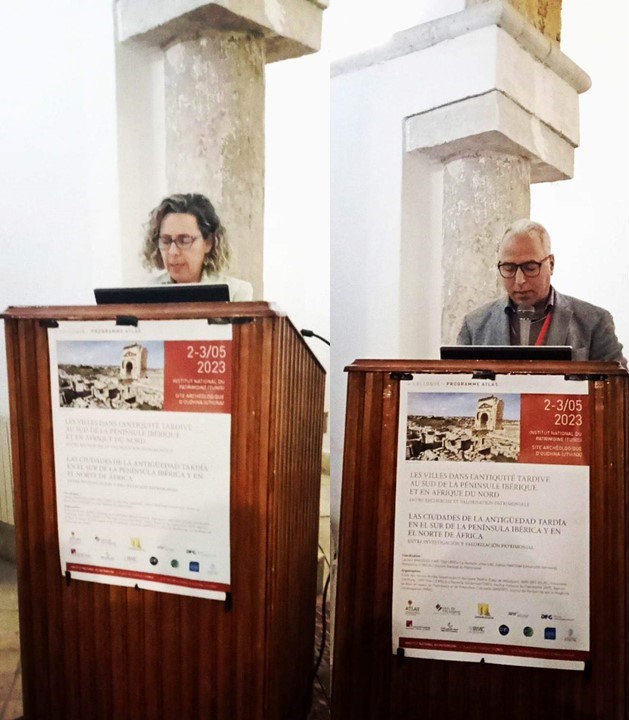
The last presentation this day was by our own database and GIS expert Frédéric Pouget. He gave a general presentation of our WebGIS for the people who joined our colloquium, followed by an update on the latest changes and improvements. We now have a search function that allows you to search the database by text in fields. This was a request of the ATLAS members at our meeting in La Rochelle. Moreover, the filtering options have also been updated (by centuries, types of evidence or inscriptions, by city, etc.), allowing users to make more specific searches.

After this successful day we went back to our hotel for another great Tunisian dinner and to get some rest. Wednesday we had an early bus to get to Oudhna.
Wednesday May 3rd: Conference at Uthina (AVMPPC)
After a relaxing bus ride we arrived at the new interpretation centre of Uthina (Oudhna). The building was inaugurated last year and offers all the necessary information about the site before visiting the fantastically preserved archaeological remains. Moreover, it provides a conference room and restaurant. In short, a great location to gather archaeologists, epigraphers and ancient historians to discuss Late Antiquity.
We started our second day with the presentation of one of our own case studies by the team of archeologists responsible for the newest research. Caroline Michel d’Annoville, Mohamed Ben Nejma and Zénaide Lecat presented the paper they wrote jointly with our ATLAS member Elsa Rocca. They gave us an overview of the latest archaeological work carried out, including geophysical surveys and excavations. The geophysical survey provided new data for a better understanding of the area between the theatre and the large “à auges” building, in the north-eastern sector of the city. Archaeological excavations focused on the area of the possible forum, where several productive structures of late antique chronology were found and are currently being studied.
David, who was the star of our colloquium, gave his third and last paper on Leptiminus, another case study of our project. Here again, the archaeological research carried out in recent years has shown us some of the results corresponding to the Late Antique phases. During this period the city seems to develop through a polynuclear urbanism, especially in points close to the port area, and to reduce in extension, a dynamic observed in other North African cities such as Lepcis Magna or Tipasa.
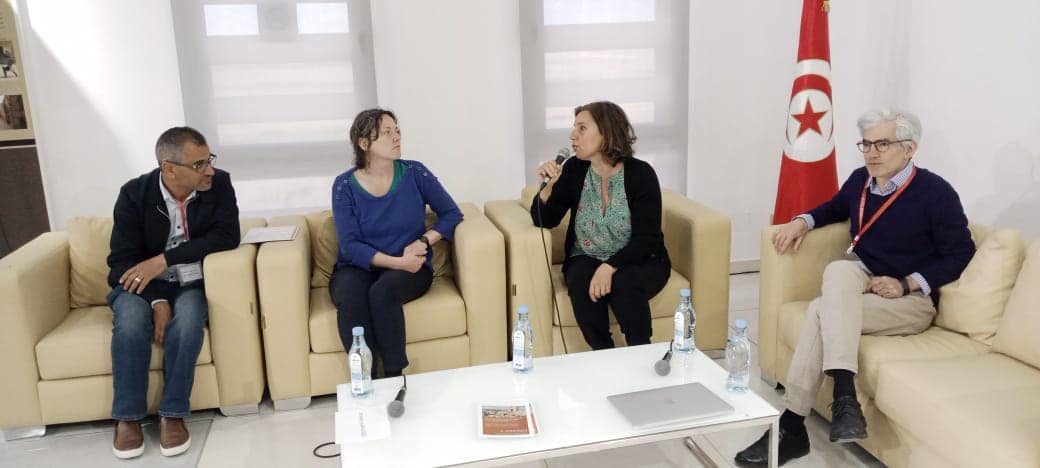
Stefan had the honour to present the work on Simitthus done by a German Tunisain collaboration (including Moheddine Chaouali, Heike Möller and Philipp von Rummel). He reviewed the status quaestionis and presented some new results including a basilica with a possible baptistery and mausoleum or even martyrium?
After the treatise of several of our North African case studies, it was time to give way to presentations providing a comparative approach. First up is yet another ATLAS member: Jesús. This time he takes us to the Algerian site of Tipasa and presents the work Alejandro Quevedo and he are doing in an Algerian-Spanish collaborative project. In addition to outlining some of the problems that the site is facing, due to urban encroachment and the sea claiming more and more land, he also pointed out the enormous research potential of the site, also from a comparative perspective with other parts of the Mediterranean.

With the morning session done we had to wait for 15 minutes to have the lunch presented, unsurprisingly all participants swiftly headed for the site. After half an hour the organisation had to gather the scholars from the site, where they stood discussing, ceramics, building plans and phases. The lunch was again a feast of tunisian cuisine. Due to the many requests to have just a bit more time on the site, the programme was slightly altered and we obtained another hour to discover and discuss Uthina.

The afternoon programme started with Sanaa Hassab, taking us to Morocco and discussing the reorganisation of the province of Mauretania Tingitana into the diocese of Hispania and its effects on the local urban system. Next up, the anthropologist Kahina Mazarai surprised us by stating that she had been studying us, studying and discussing the Maghreb in antiquity. She pointed out that the dynamics between the different national institutes are problematic, as well as the use of Roman North Africa, as it defines the region with Roman, and thus colonial, terminology. Clearly there was ample discussion and reflection after her presentation.
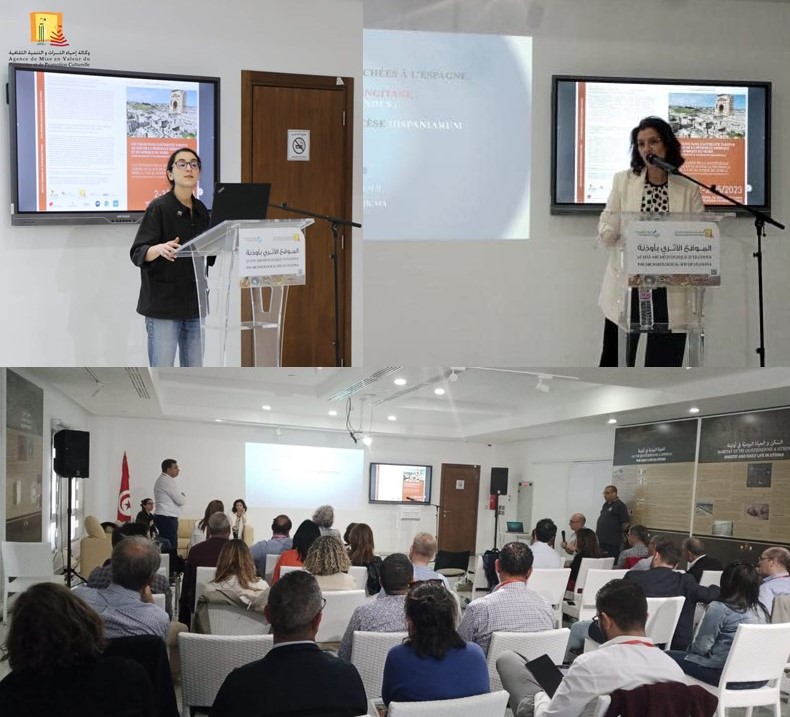
The AMVPPC opened the session on the valorisation of heritage. Mohamed Ben Fathallah and Wahid Ben Ghozi presented the use of the latest technology to improve our understanding and interaction. Followed by Moiz Toubal giving us an overview of the valorisation practices applied by the AMVPPC to Bulla-Regia, Dougga and Uthica.
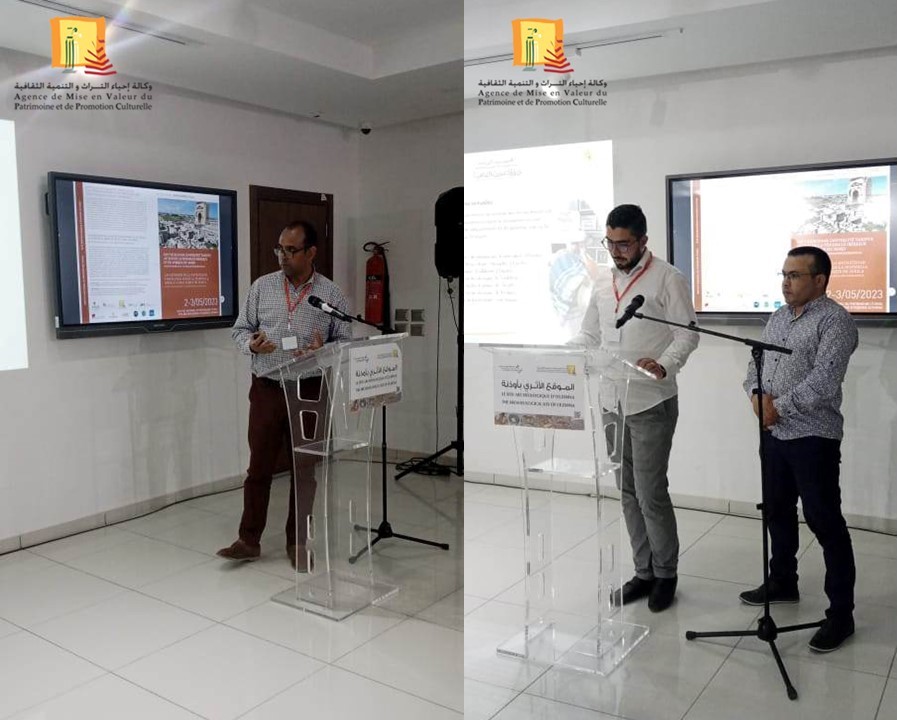
With the last presentation of our conference, we returned to our own work. Laurent presented, on behalf of Titien and Jean-François, the progress of the 3D modelling for the work. As well as giving us an overview of the progress of this important part of the project, he also outlined some of the challenges facing us in the reconstructions of the various buildings chosen and the plans for the touring exhibition planned for next year.

Thursday May 4th: Visit to Thuburbo Maius and Testour
The last day of our stay in Tunisia was one of leisure. And with a group of ancient historians and archaeologists, this means visiting an archaeological site. For the third day in a row we had to get up early to get the bus. First up Thuburbo Maius! At the site we were welcomed by Hamden ben Romdhane, the lead archaeologist of the INP for Thuburbo Maius. He gave us a tour of the site. As most of the group consisted of people studying Hispania, the exclamations of awe were plentiful. The archaeology and epigraphy of the sites of the Maghreb are impressive. There is an abundance of standing walls and epigraphy that beg for research. Hamden showed us the different areas of the city and explained their significance and history from the Imperial period up to Late Antiquity. After three hours we could still have continued learning more about this city, but the programme had us to continue.
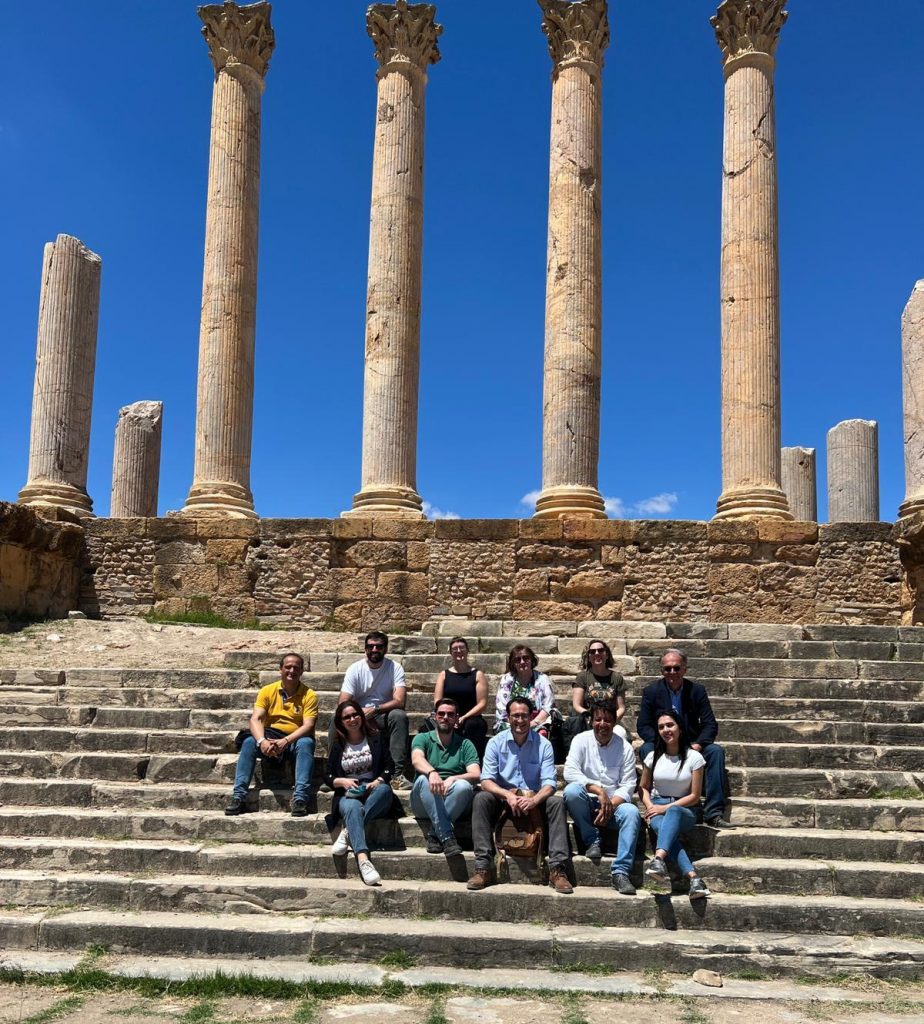
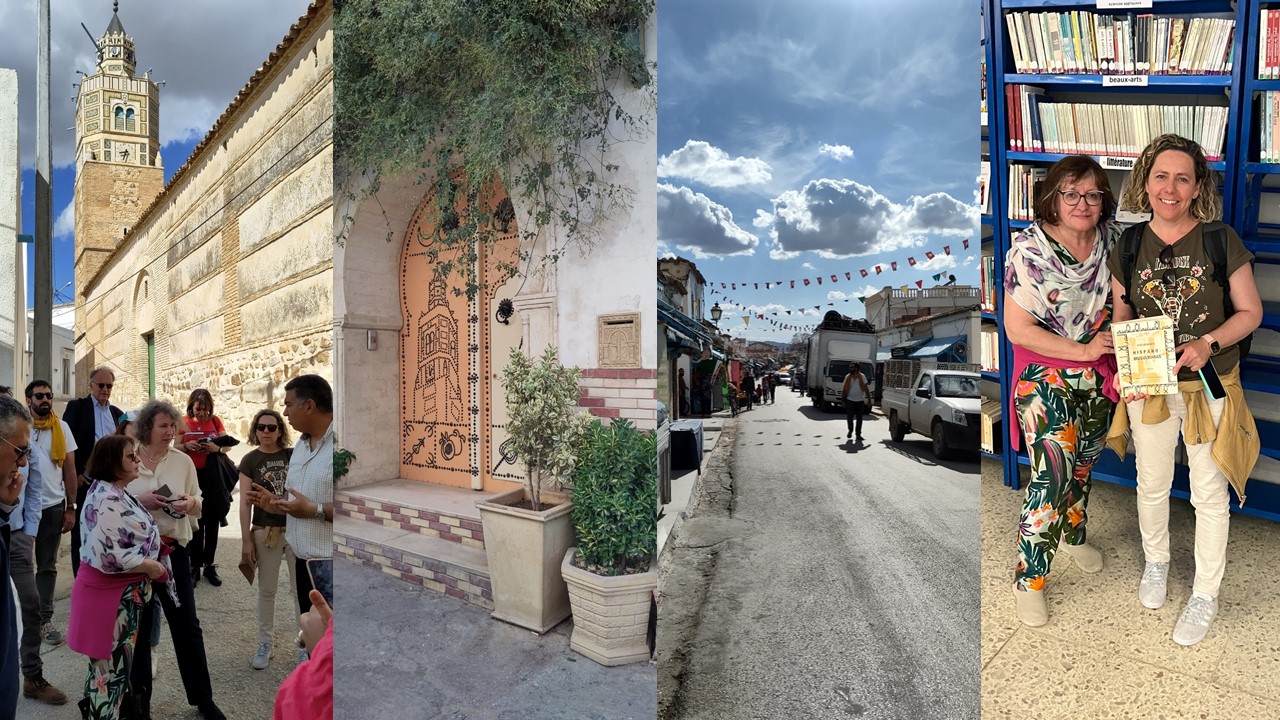
We look back on an amazing workshop where we were able to exchange ideas, see the progress of the workgroups and get some new insights. But the ATLAS workshop was not the sole reason to visit Tunisia. Our directors met with the directors of the INP to discuss our collaboration. The directors took the opportunity to meet with the president of the INP and discuss the collaboration. Moreover, Iconem, our partner for the reconstructions, visited Mactar to do the needed photogrammetry of the site. Our next and final Workshop will be in a year in Madrid!
(*)The images are a combination of pictures taken the ATLAS team and those of the photographers of the INP and AMVPPC.
